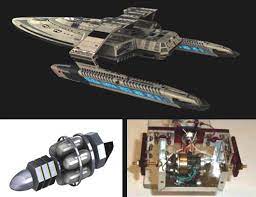
Breaking News
 Trump buys millions in Boeing bonds while awarding it contracts
Trump buys millions in Boeing bonds while awarding it contracts
 US Africa Command Launches a 'Series' of Airstrikes in Somalia's Puntland Region
US Africa Command Launches a 'Series' of Airstrikes in Somalia's Puntland Region
 "Trump Corridor" and the Future of Global Power
"Trump Corridor" and the Future of Global Power
 Blue Origin Will Increase New Glenn Thrust 15-25% and Make Rocket Bigger
Blue Origin Will Increase New Glenn Thrust 15-25% and Make Rocket Bigger
Top Tech News
 New Gel Regrows Dental Enamel–Which Humans Cannot Do–and Could Revolutionize Tooth Care
New Gel Regrows Dental Enamel–Which Humans Cannot Do–and Could Revolutionize Tooth Care
 Researchers want to drop lab grown brains into video games
Researchers want to drop lab grown brains into video games
 Scientists achieve breakthrough in Quantum satellite uplink
Scientists achieve breakthrough in Quantum satellite uplink
 Blue Origin New Glenn 2 Next Launch and How Many Launches in 2026 and 2027
Blue Origin New Glenn 2 Next Launch and How Many Launches in 2026 and 2027
 China's thorium reactor aims to fuse power and parity
China's thorium reactor aims to fuse power and parity
 Ancient way to create penicillin, a medicine from ancient era
Ancient way to create penicillin, a medicine from ancient era
 Goodbye, Cavities? Scientists Just Found a Way to Regrow Tooth Enamel
Goodbye, Cavities? Scientists Just Found a Way to Regrow Tooth Enamel
 Scientists Say They've Figured Out How to Transcribe Your Thoughts From an MRI Scan
Scientists Say They've Figured Out How to Transcribe Your Thoughts From an MRI Scan
 Calling Dr. Grok. Can AI Do Better than Your Primary Physician?
Calling Dr. Grok. Can AI Do Better than Your Primary Physician?
Vacuum airship would work in thin atmosphere of Mars

This concept is similar to a standard balloon, whereas a balloon uses helium or hydrogen to displace air and provide lift, a vacuum airship uses a rigid structure to maintain a vacuum to displace air and provide lift.
A vacuum airship made of a homogenous material cannot withstand the atmospheric pressure on Earth for any material humans have yet discovered, which can be proven using the critical buckling load of a sphere. However, from an initial analysis of the vacuum airship structure and relationship to atmospheric conditions, Mars appears to have an atmosphere in which the operation of a vacuum airship would not only be possible, but beneficial over a conventional balloon or dirigible. In addition, a multi-layer approach, in conjunction with a lattice, would circumvent the buckling problems of a single homogenous shell. The lattice used to support the two layers of the vacuum airship shell can be made, using modulation of the lengths of the members, to fit the curvature of the vacuum airship precisely by following an atlas approach to the modulation.

 Unbanked In A Connected World
Unbanked In A Connected World

